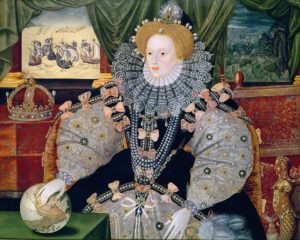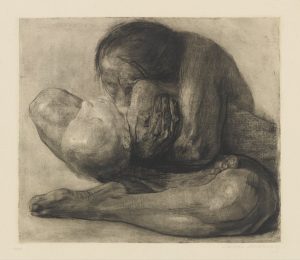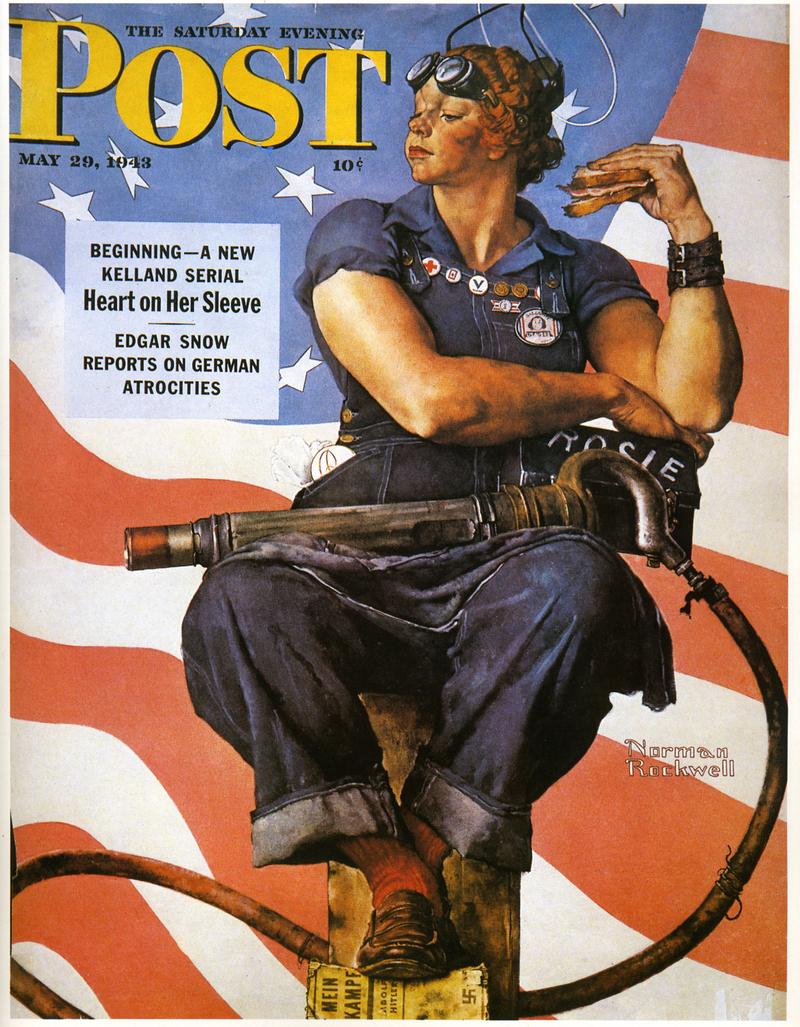
The Armada Portrait (Queen Elizabeth) by George Gower (c. 1546-1596)
The Armada Portrait, displayed in the Long Gallery, is a must see for visitors to Woburn Abbey. An impressive picture, it is a statement of power and authority with Queen Elizabeth I portrayed as Empress of the world and commander of the seas.
This portrait of Elizabeth I is attributed to George Gower in 1588 and is an oil painting on an oak panel. It is known as ‘The Armada Portrait’ because it commemorates the great sea battle of 1588 when the English fleet defeated the invading Spanish Armada sent to overthrow Elizabeth. The view of the battle in the two windows behind the Queen conveys messages of Elizabeth’s victory.
This is probably the most iconic portrait of Elizabeth the Virgin Queen (and is one of three versions in existence). Her hand is firmly on the globe and the Imperial crown reflects her equality with the Holy Roman Emperor and her status as Empress of the world, whilst the mermaid hints at her command of the seas. Her dress, in her preferred colours of black and white, also proclaims her rank and is covered with her favourite gems and precious pearls from the sea, a sign of virginity. The Long Gallery is a space that served several purposes. It could be used for displaying collections of art and for exercise by walking up and down the room when the weather discouraged a visit to the gardens. It is still used by the family when entertaining guests.
Source: http://www.woburnabbey.co.uk/abbey/art-and-the-collection/the-armada-portrait/
Käthe Kollwitz (1867-1945)
 Kollwitz is considered one of Germany’s most important early 20th-century artists. She is noted for having captured the hardships suffered by the working class in her drawings, paintings, and prints. Themes of war and poverty dominate Kollwitz’s oeuvre, with images of women grieving dead children a particularly important and recurring theme—an experience that Kollwitz suffered herself when her son died in WWI, influencing her decision to become a Socialist. Kollwitz’s unflinching exploration of human suffering amounted to a searing indictment of social conditions in Germany. In 1936, the Nazis declared Kollwitz’s art “degenerate” and her artworks were removed from museums.
Kollwitz is considered one of Germany’s most important early 20th-century artists. She is noted for having captured the hardships suffered by the working class in her drawings, paintings, and prints. Themes of war and poverty dominate Kollwitz’s oeuvre, with images of women grieving dead children a particularly important and recurring theme—an experience that Kollwitz suffered herself when her son died in WWI, influencing her decision to become a Socialist. Kollwitz’s unflinching exploration of human suffering amounted to a searing indictment of social conditions in Germany. In 1936, the Nazis declared Kollwitz’s art “degenerate” and her artworks were removed from museums.
Source: https://www.artsy.net/artwork/kathe-kollwitz-woman-with-dead-child
Rosie the Riveter (1943 – ????)

Rosie the Riveter was created by Norman Rockwell and first appeared on the cover of the Saturday Evening Post in 1943. This painting was inspired by a song titled “Rosie the Riveter,” written by John Jacob Loeb and Redd Evans released in the early months of 1943. The government was largely responsible for taking both the song and painting and using it as a campaign to inspire women to serve in the workforce. She was a part of a campaign to recruit female workers for defense industries during World War II. As men left for war, women quickly began joining the workforce, in fact, the percentage of women in it increased 10 percent. It is estimated that over 19 million women joined the ranks of manufacturing workers during the course of the Second World War. The aircraft and munitions industry employed thousands if women. Her picture became the icon for feminism and created new opportunities for many American women. While Rockwell’s version of Rosie endures as one of the most famous icons of the war, another rendition of Rosie appeared a year earlier in 1942, an artist named J. Howard Miller had created an earlier version of Rosie for Westinghouse Electric and Manufacturing Company. Miller’s Rosie is also depicted as jaunty and flexing her bicep and sporting a polka-dotted scarf. The daughters of many of these women who worked in the factories would later chip away at the limits of women socially accepting low-paying jobs, like clerical work. They instead sought out higher education and professional roles as the 1950s and 1960s opened up more opportunities for women.
Source: https://www.history.com/topics/world-war-ii/rosie-the-riveter